CONDITIONS
CLOACA
-
OVERVIEW
A cloaca is a rare malformation that occurs in girls. When a cloacal abnormality occurs, the rectum, urethra and vagina share a common pathway to the perineum or bottom. Girls with a cloacal anomaly will have one opening on the perineum rather than the expected three openings. This is the most complex type of anorectal malformation. Cloacal malformations also range in complexity depending on the length of the common channel and the length of the urethra. Girls with a cloacal malformation may have a normal uterus but are at increased risk of having abnormalities in their uterine structures. These can include duplicated uteri, uterine cavities that are not fully developed and are not connected to the vagina, or no uterus at all.
Treatment requires an experienced team with colorectal surgery, urology, and gynecology specialists.
-
EVALUATION & TREATMENT
Evaluation begins with a detailed examination of the newborn perineum (or bottom) to confirm the diagnosis of cloaca. In girls born with cloaca, only one opening will be visible in the perineum compared to the typical female anatomy which has 3 separate openings.
An abdominal ultrasound is performed to evaluate for the hydrocolpos. With hydrocolpos, fluid (vaginal mucous and urine coming from the bladder) accumulates in the vagina. The distended vagina puts pressure on the trigone area of the bladder resulting in blockage of the urinary tract causing hydronephrosis and potential renal injury. Hydrocolpos must be treated urgently with decompression of the dilated vagina with the goal being to prevent renal injury and preserve renal function. Drainage can be accomplished by intermittent catheterization (IC) through the single opening. Adequate decompression is confirmed by repeat ultrasound and improvement of the hydronephrosis. If IC is not successful, the vagina is drained by a percutaneous catheter or surgically by creation of a vaginostomy. Patients with cloaca require creation of a colostomy within the first few days of life and if vaginostomy is required, these procedures are done during the same initial operation. Newborns are also screened for associated VACTERL anomalies similar to other ARM patients.
Definitive cloacal reconstruction requires a collaborative team's expertise, including colorectal surgery, urology, and gynecology. Surgical planning begins with a detailed mapping of the cloacal anatomy using cystoscopy, vaginoscopy, and ideally using advanced radiologic imaging techniques such as 3D cloacagram. Precise and accurate measurement of the common channel and urethra is a critical determinant before the repair of cloacal malformations. Surgical approaches can be broadly divided into total urogenital mobilization (TUM) or a urogenital separation technique. The choice of which approach depends on the length of the common channel and available urethra. In rare cases, when there is insufficient vaginal length, bowel tissue is used to reconstruct a vaginal replacement or the vaginal management can wait until puberty or young adulthood. The key to the reconstruction is to create a separate urinary system that allows for reliable bladder emptying and to create an opening for stool. This allows the patient to be clean and dry for urine and stool at the age of potty training.
-
OUTCOMES & AREA OF STUDY
After cloacal repair, careful follow-up is required to ensure adequate bladder emptying, preserved renal function, and bowel control. Specialized gynecology follow-up into adolescence and adulthood is also important to help manage potential problems with menses, sexual function, and pregnancy.
Initial studies using the PCPLC registry data have compared the accuracy of cloacal measurement techniques. PCPLC has formed multidisciplinary committees comprising of colorectal surgeons, urologists, and gynecologists. These committees are studying long-term issues unique to Cloaca to develop best practice guidelines and optimize long-term outcomes and quality of life for patients with this rare malformation.
What is a Cloaca?
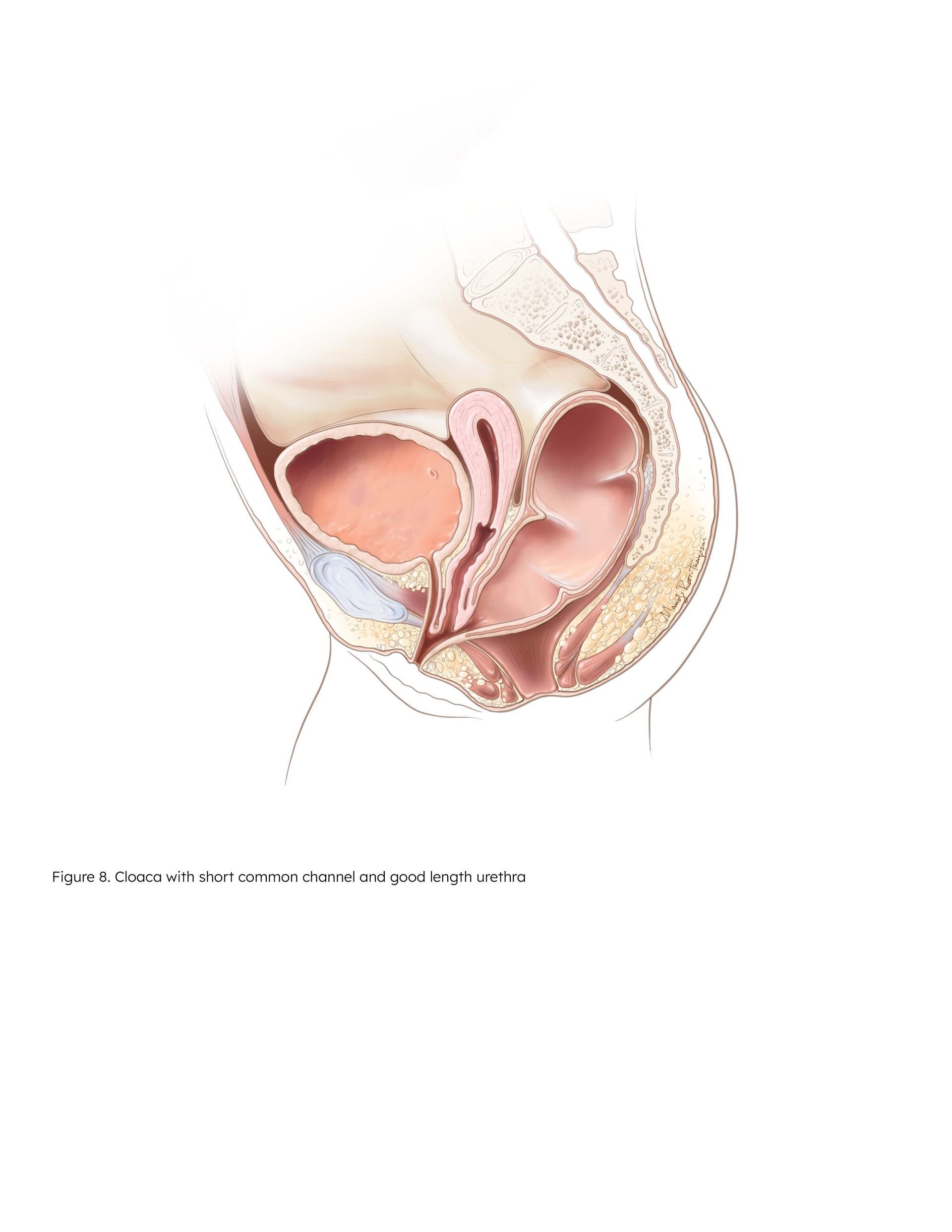
Slide title
Cloaca with short common channel
Button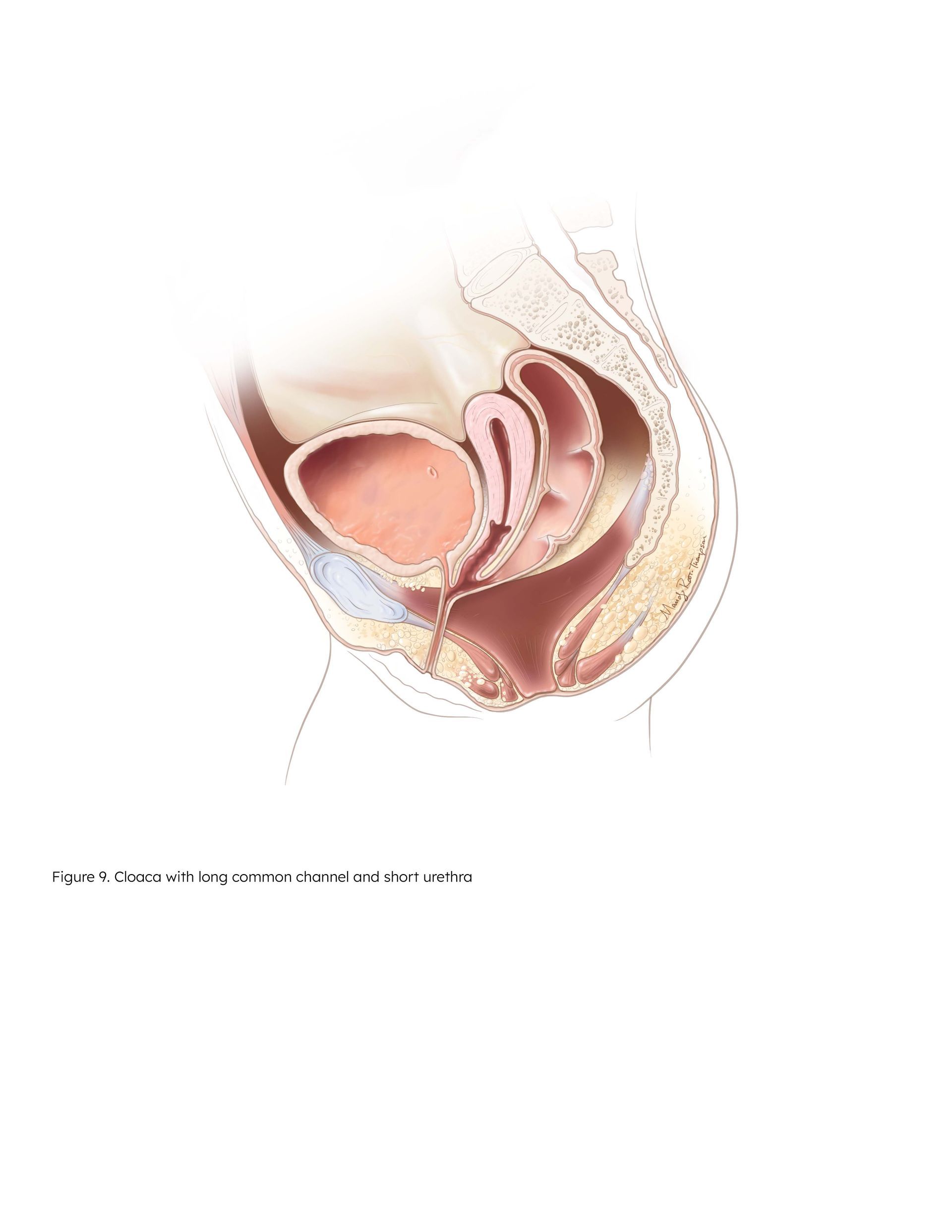
Slide title
Cloaca with long common channel
Button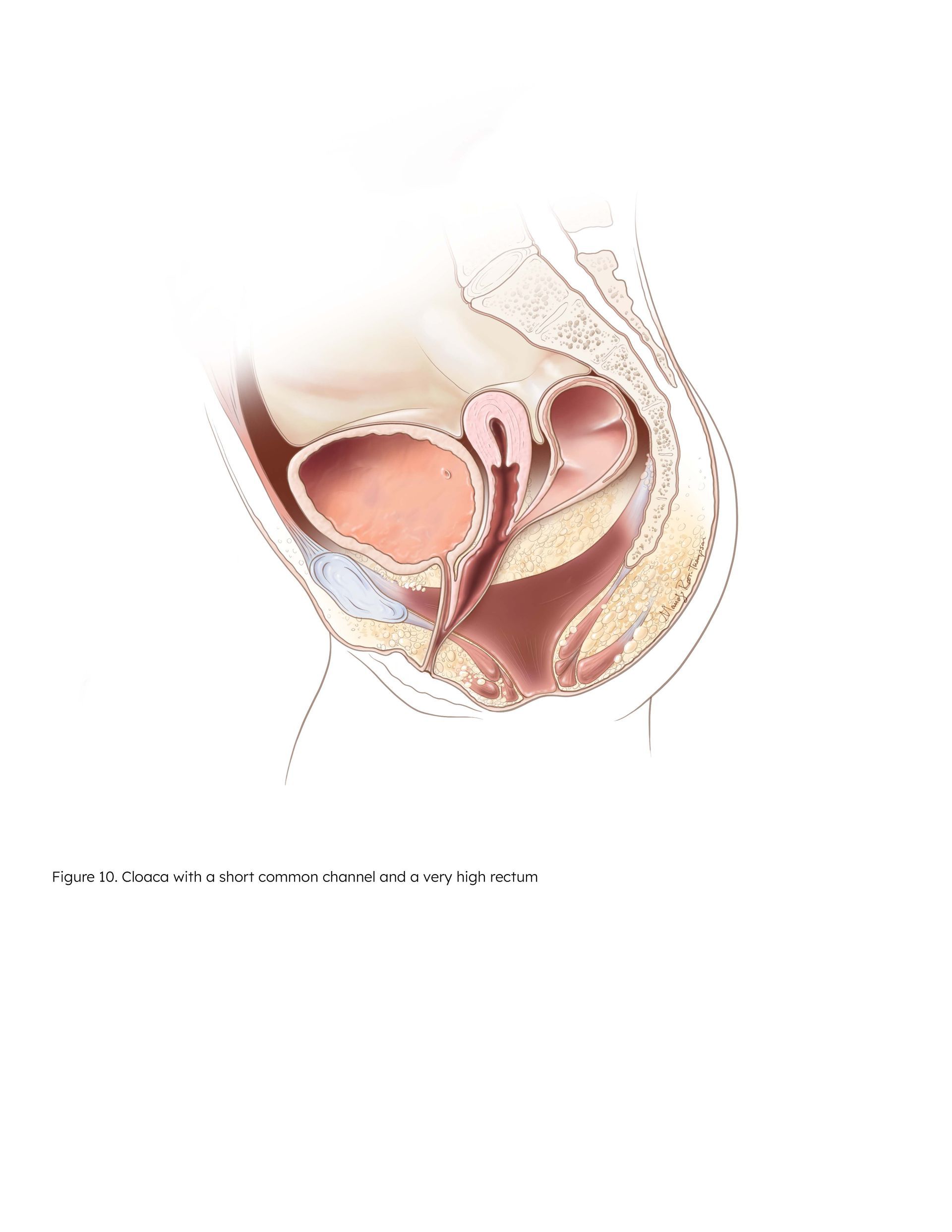
Slide title
Cloaca with a very high rectum
Button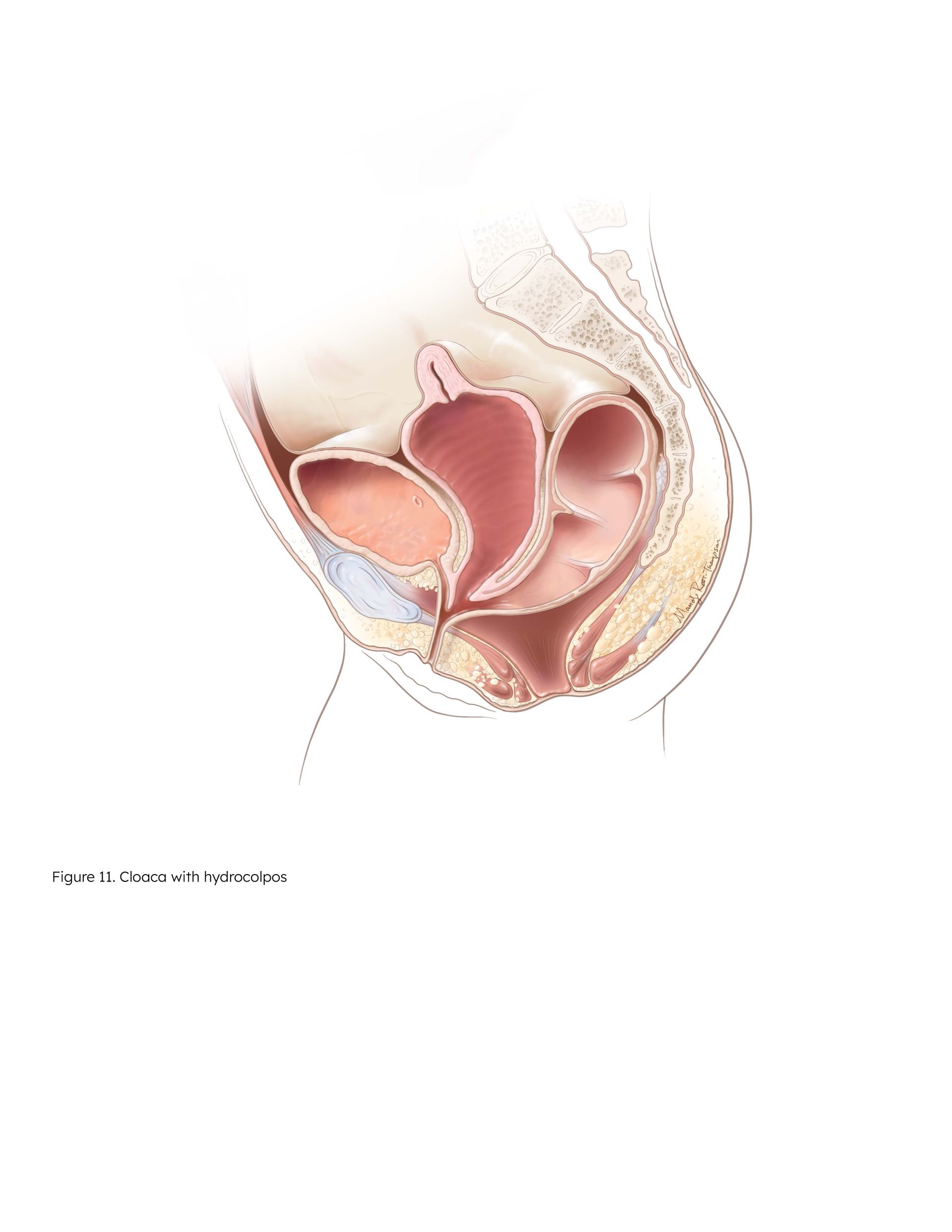
Slide title
Cloaca with two hydrocolpos
Button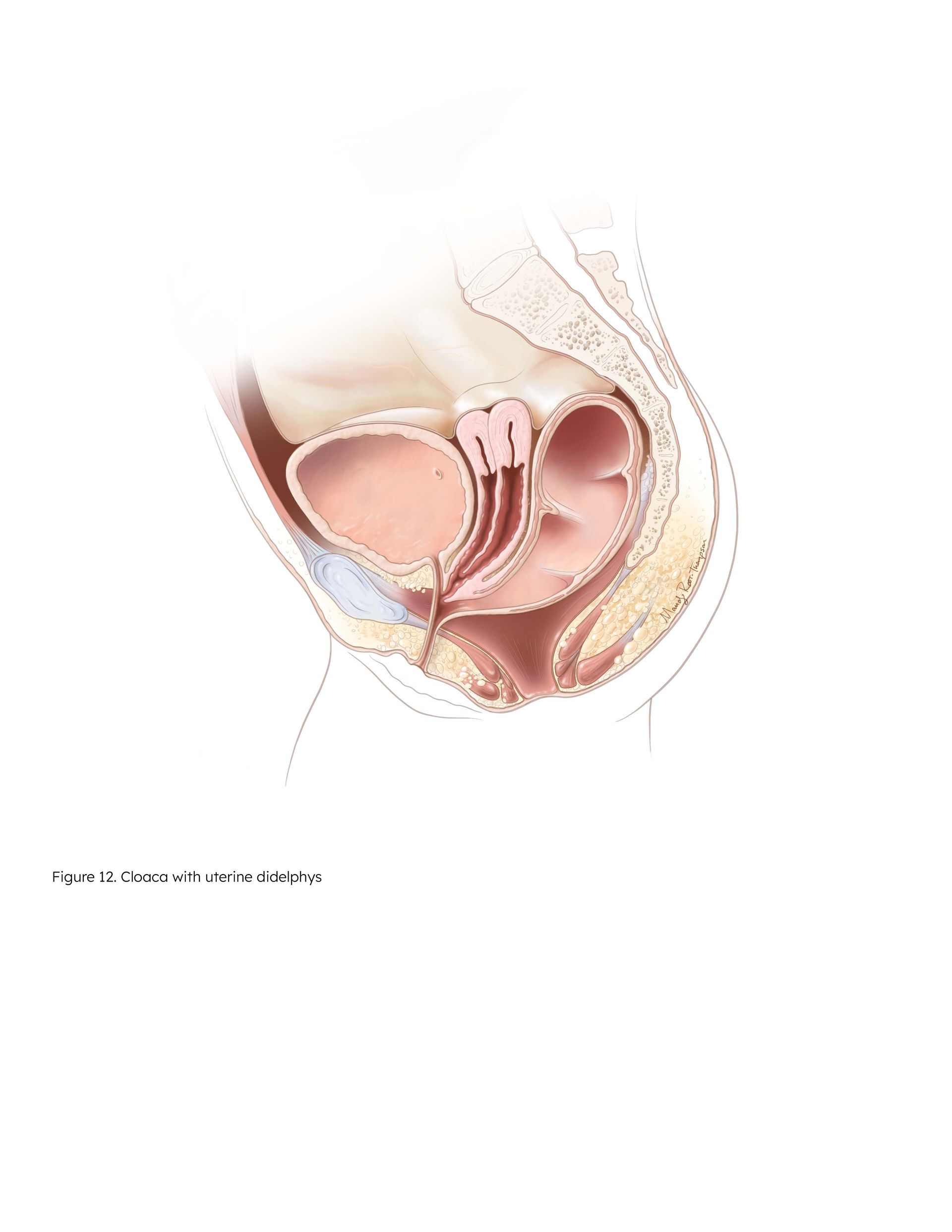
Slide title
Cloaca with two hemivaginas
Button

